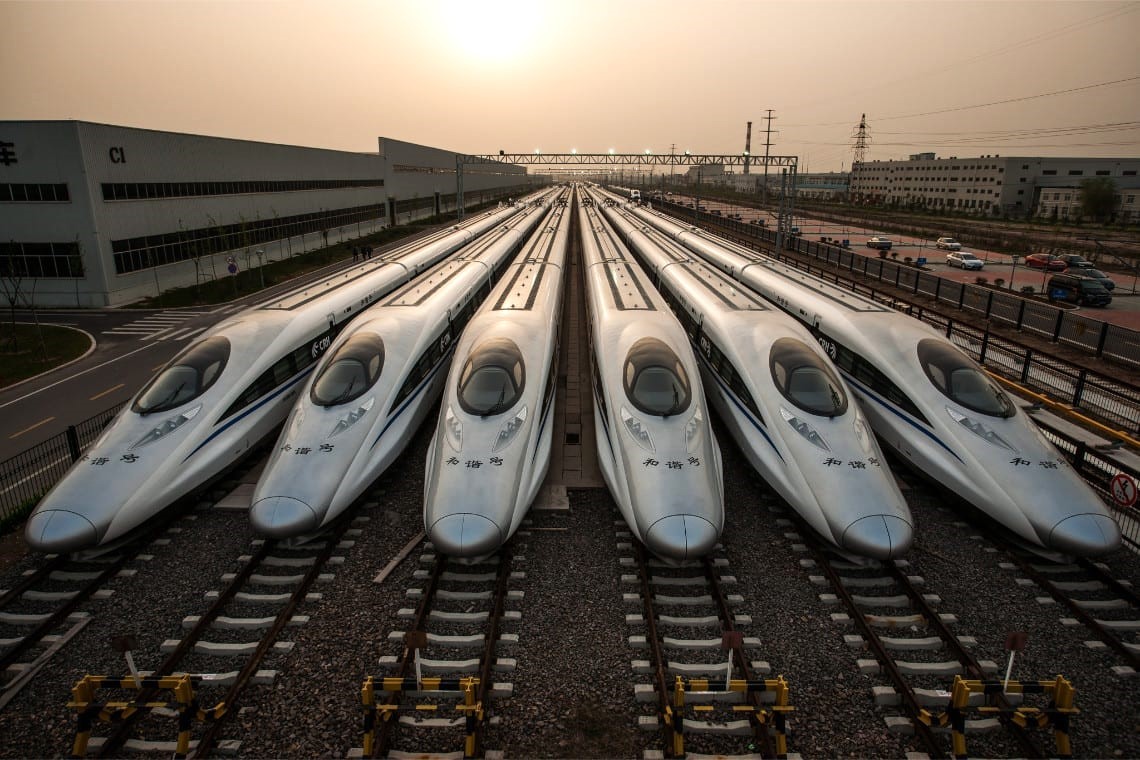

China's already vast high-speed rail network considered the world's most extensive, is set to undergo further expansion.

In the upcoming months, an extensive expansion of the country's electrified rail transport is set to be completed. This expansion will introduce several new rail lines, including a 277km (172-mile) connection between Fuzhou and Xiamen, a 203km route connecting Guangzhou and Shantou, and a 278 km link linking Shanghai and Nanjing, as reported in South China Morning Post.
However, this needs to be noted that upon commencement, the new lines will extend for a distance exceeding half the length of Germany's high-speed railway network. Each line will accommodate trains with a maximum operating speed of 350km/h (217mph).
China's CRH factory in Qingdao plays a significant role in the high-speed train industry, being responsible for designing and manufacturing nearly half of the country's high-speed trains. With an impressive setup of 200 workshops, the factory produces over 40,000 components, showcasing its immense manufacturing capacity. Notably, the trains' construction involves the seamless welding of 72 special aluminium alloy plates, highlighting the cutting-edge technology and expertise employed in their production.
Aluminium alloy sheets are crucial in manufacturing Japan's Shinkansen (Bullet Train) and high-speed railcars, providing a perfect balance of lightweight design and exceptional strength. This combination ensures optimal high-speed performance for these trains while maintaining structural integrity.
The recent expansions of China's high-speed railway network distinguish themselves from existing lines due to their unique construction approach. Robots designed explicitly for overhead electrified lines were employed in building these new railway sections. Engineers overseeing the projects have successfully tested and approved the automated construction methods, paving the way for their integration into upcoming high-speed rail initiatives.
Experts are celebrating a significant industry milestone with the widespread implementation of overhead electrified line construction robots. This development indicates that machines can now assume most labour-intensive tasks associated with high-speed railway construction. Railway construction encompasses various activities, such as excavation, grading, track-laying, bridge and tunnel construction, and the implementation of signalling and communication systems. Establishing railway infrastructure involves substantial expenses and demands considerable physical labour and specialized expertise and know-how.
In the present day, the construction of railways has undergone a transformation with the widespread integration of robots and other cutting-edge technologies. These advanced systems have significantly alleviated the burden of labour-intensive tasks traditionally associated with railway building.
Trains that travel at 200 km/hour or higher demand lightweight materials that possess excellent corrosion resistance and can achieve an airtight seal. For such train body applications, aluminium emerges as the perfect choice due to its remarkable strength-to-weight ratio, high ductility, and low vulnerability to corrosion. Aluminium profiles are necessary for the entire train compartment of high-speed trains travelling at speeds exceeding 350 km/hour, except for the chassis.
Responses








